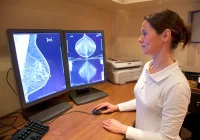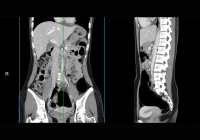Renal masses are increasingly detected incidentally due to the widespread use of advanced imaging technologies. Among these lesions, clear cell renal cell carcinoma (ccRCC) represents the most prevalent malignant subtype and is characterised by a higher risk of metastasis and a poorer prognosis. For cT1 tumours, which remain confined to the kidney and measure no more than 7 cm in diameter, accurate preoperative characterisation is essential to inform treatment decisions. The clear cell likelihood score (ccLS) was developed to assess the probability of ccRCC in solid renal masses (SRMs) using MRI indicators. While effective, the ccLS system has limitations, particularly in lesions scored as category 3, where diagnostic uncertainty remains. This has prompted interest in enhancing the ccLS model by integrating additional imaging markers such as cystic degeneration and necrosis, both of which are strongly associated with ccRCC.
Improving Diagnostic Accuracy through Integration
A retrospective study evaluated the diagnostic performance of an augmented ccLS system that incorporates cystic degeneration or necrosis (cn-ccLS) in cT1 SRMs. This study involved 287 patients with 293 pathologically confirmed renal masses and compared the diagnostic capabilities of ccLS and cn-ccLS. The integration of cystic degeneration or necrosis into the ccLS framework improved the sensitivity of ccRCC detection from 74% to 92% without significantly reducing specificity (88% vs 91%). The enhancement in performance was consistent across tumour subgroups, including both cT1a and cT1b lesions. For instance, in cT1a tumours, sensitivity increased from 74% to 90%, while in cT1b tumours, it rose from 75% to 98%. This improvement may be attributed to the frequent presence of cystic degeneration and necrosis in larger or more aggressive ccRCC tumours, which reflects their rapid growth and insufficient blood supply.
Must Read: Low-Dose CT with Denoising for Renal Mass Monitoring
The revised scoring approach adds one point to the original ccLS if cystic degeneration or necrosis is identified, which is especially useful in category 3 lesions that typically present a diagnostic challenge. This additional score leads to a more accurate classification, moving a number of ambiguous cases into higher probability categories. The result is a diagnostic system that is more reliable in identifying ccRCC and less likely to underestimate its presence.
Impact on Category 3 Lesions and Reader Agreement
One of the most significant improvements introduced by cn-ccLS was its ability to reduce the proportion of ccRCC cases classified as category 3. In the original ccLS system, category 3 lesions showed a 68% probability of being ccRCC. With the cn-ccLS, this proportion dropped to 38%, reducing diagnostic ambiguity. The effect was even more pronounced in cT1b tumours, where the proportion of ccRCC in category 3 decreased from 64% to 10%. This shift enhances clinical decision-making by clarifying cases that would otherwise fall into a diagnostic grey zone.
The study also found that the cn-ccLS system resulted in improved interobserver agreement. The overall agreement coefficient (κ value) rose from 0.62 for ccLS to 0.71 for cn-ccLS. This improvement is significant given the subjective nature of MRI interpretation. Among individual MRI features, the agreement for identifying cystic degeneration or necrosis (κ = 0.76) surpassed that of traditional ccLS indicators such as microscopic fat (κ = 0.39) and segmental enhancement inversion (κ = 0.17). This suggests that cystic degeneration and necrosis are more consistently recognised across readers, contributing to the increased reproducibility and robustness of the revised scoring method.
Clinical Relevance and Future Considerations
The introduction of the cn-ccLS model offers practical benefits for radiologists and clinicians by enhancing the diagnostic confidence and reliability of MRI evaluations for cT1 SRMs. By accounting for imaging features commonly associated with ccRCC, such as cystic degeneration and necrosis, the revised score provides a more nuanced and accurate representation of tumour pathology. Notably, this enhancement does not require alterations to the existing ccLS framework, making it an accessible upgrade for clinical practice.
Despite the promising results, several limitations should be considered. The study was conducted at a single centre with a high prevalence of ccRCC, which may affect the generalisability of the findings. Additionally, the inclusion criteria were limited to cases with complete pathological confirmation, potentially introducing selection bias. Differences in reader experience may also influence the identification of cystic degeneration and necrosis, although the improved interobserver agreement suggests that these features are relatively stable markers. Finally, the study did not evaluate the performance of cn-ccLS in other renal tumour types beyond the five most common subtypes, and its application in broader clinical settings remains to be validated.
Incorporating cystic degeneration and necrosis into the clear cell likelihood score substantially improves the diagnostic performance of MRI in identifying clear cell renal cell carcinoma in cT1 solid renal masses. The cn-ccLS model enhances sensitivity, reduces diagnostic ambiguity in category 3 lesions and improves interobserver agreement. While further validation through large, multicentre prospective studies is required, the findings support the clinical value of integrating these imaging features into standard MRI-based renal mass evaluation protocols.
Source: Insights into Imaging
Image Credit: iStock










